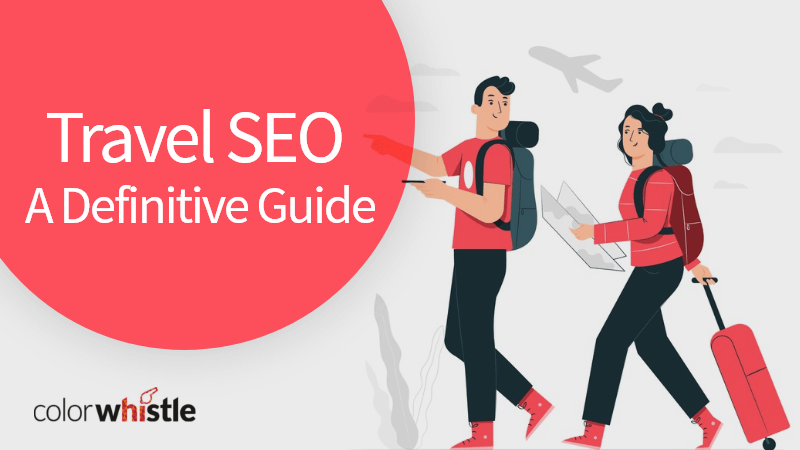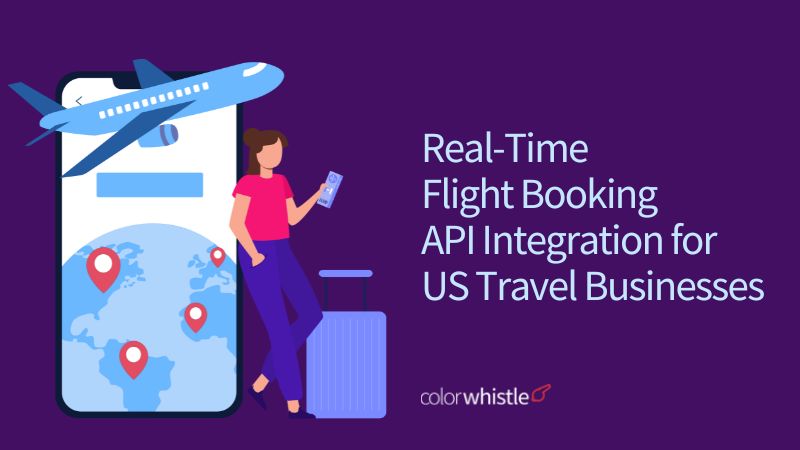SEO for your travel website can indeed boost your online visibility, traffic, engagement, conversions, and ultimately ROI. Taking travel SEO for granted will have a massive impact on your SERP rankings.
Only when your travel website have an optimal position in the SERP for the intented keywords/queries, potential travelers might pitch in to your website, blogs, podcast, video, or any material.
In this blog, we’ve outlined a few proven SEO strategies for your travel website. As a professional travel SEO agency, we’ve concentrated only on ethical strategies neglecting black-hat practices.
How to do Travel SEO for a business?
For any business regardless of the type and size, without strategic SEO efforts, it’s very challenging to gain exposure in the online space. You might have designed and developed your website with attractive graphics, user-friendly navigation, eye-catchy font, quick load time, responsiveness, and others but it’s SEO that showcases your brand before the right audience at the right time.
Statistics reveal that 93% of the online experiences start with a search and that 95% of natural clicks come from page one of Google. It’s reported that Google processes around 70,000+ search queries per second.
SEO for travel websites has led to an increase of internet bookings by 78% and has been a valuable asset to the customer experience.
As you practice optimizing your website for SEO rankings, you can experience all these below benefits in the long run.
- Improvement in brand visibility
- Increase in website traffic
- Rise in ROI
- Reduction in patient acquisition cost
- Growth in website rankings for relevant search queries
- Paves way for connecting with highly interested prospects
Also Read
How Should you Implement Travel SEO?
When it comes to SEO implementation for a travel website, there are a few things you have to take into account to meet the demands of both the search engine and audience. Here, we have listed some of the areas you can bring improvements for SEO advantage.
1. Page Load Time
Your website should load within a fraction of seconds because when loading time goes from 1s to 10s, the probability of bounce rises up by 123%. The average webpage load time recommended by Google is less than 3 seconds.
40% of people bounce off a website that takes more than 3 seconds to load. Proper maintenance of your webpage load time is crucial because it protects from threats like customer dissatisfaction, loss of potential clients, tarnished brand image, and reduction in search engine ranking.
In fact, Amazon recently analyzed that a one-second delay in page load speed costs them $1.6 billion in sales each year. Usage of unclean code, various types of ads, multiple flash content, JavaScript issues, un-optimized images with high-resolution causes your website to slow-down.
With the help of tools like Pingdom Website Speed Test, GTmetrix, Google PageSpeed Insights, you can optimize every content of your webpage so that it loads quickly and provides an engaging user experience to your travelers.
2. Voice Search
Voice search allows your travel audience to begin with a search while jogging, cooking, cleaning, etc. It will never interrupt any of their activities, instead, allows them to do multitasking.
When we look at this from the SEO side it says that 71% of respondents would rather use their voice assistant to search for something than physically typing their queries. Ofcourse, voice search is a win-win solution for your online travel website.
Strategies to optimize your site for voice search
- Voice-based keywords research
- Site structure and content strategy implementation
- Structured data optimization
- Mobile-friendly content optimization
- Google Home and Amazon Alexa friendly content optimization
We have also spoken about voice search and SEO opportunities elaborately in one of our blog posts. If you like to go through it, then click on the link.
Did You Know?
According to Google, leisure travellers use search engines more than any other online marketing channel to begin their travel planning.
3. Tourism-related Keywords
While optimizing your content, you want to place the best matching keywords on your web content, social media posts, GMB profiles, etc.
Also, just writing content for keyword purposes cannot bring the expected outcomes. When you do so, you will be easily caught by Google and there are chances for your website to be penalized. Tools like Google’s Keyword Planner, Ahrefs, Keywords Everywhere, etc give the most relevant keywords that travelers are using for search.
Before using, you have to identify the intention behind every keyword. Search engines divide keywords into three categories based on the search of the travelers like navigational, informational, and transactional.
- Navigational search – To navigate to a webpage
- Informational search – To find a specific piece of information
- Transactional search – To make a purchase
As you choose the right keywords for your travel website, half the battle is done. Follow these steps for the best keyword usage in your content.
- Stand in the shoes of your travelers and begin researching for keywords
- Analyze the search volume for these keywords in your competitors’ sites
- Use keyword research tools
- Use the right content format for the keywords
- Map each keyword to a specific page on your website
- Analyze the performance of the keywords
Also Read
4. Page Title & Meta Tags
According to Databox, 36% of SEOs think the title tag is the most important SEO element. Also, a study conducted by HubSpot reveals that page titles containing 6-13 words generate the most traffic.
Here are a few standard norms that we suggest you follow for your page title
- Avoid duplicate content in the title tag
- Provide a unique title to every page
- Avoid stuffing keywords into your page titles
An interesting statistic from Optinmonster says that 43% of people click on a given result, solely based on the meta description. Google suggests that the maximum character length of the meta description should be up to 275 characters long, and also it should be organic ad text.
How to construct a meta description?
- Use researched and targeted keywords
- Communicate the benefits of the content to the readers
- Ensure that the meta tags are relevant to the content on the page
- Avoid using the same meta description across your whole site
Page titles and meta descriptions are responsible for creating the first impression of your audience and increases their curiosity of your prospects to explore the content.
Did You Know?
Based on data from Ruler Analytics, the majority of conversions, 85%, occur online, while a smaller percentage, 15%, occur over the phone.
5. Create E-E-A-T Content
Normally, when you want to describe a person, you talk about their stature, weight, color, and other aspects. This is the same in the case of content marketing, if you want people to talk about your content & services then you must provide expertise, authoritative and trustworthy content.
In 2015, Google introduced the Quality Rater Guidelines where E-E-A-T (Experience, Expertise, Authoritativeness, Trustworthiness) became mandatory in content creation.
The quality rater, however, is not going to rank your content depending on the keywords and links. The sites or pages without purpose, content that is not helping users, harming content, misinforming and deceiving content would be given the lowest rating, whereas E-E-A-T content will be leading in the SERP.
According to Google, duplicate content refers to substantive blocks of content within or across domains that either completely matches other content or are appreciably similar. Users like to explore unique content from the search results therefore Google filters and displays only the original version of the content and not the copied one.
Here we have listed a few tips on creating quality content for your small business website without violating search engine guidelines.
- Focus on your target audience
- Do a lot of research and analysis before developing content
- Maintain consistency in your content across all channels
- Align the content to your small business goals
- Understand the basics of SEO, HTML, and CSS
- Design the content with appealing infographics, videos, images
If you find it difficult to develop quality-rich and impressive content, feel free to take assistance from the skilled content writers.
6. Link Building
Outbound/external links lead users from your site to other sites for reference. Inbound/internal links drive users from other websites to your site. When both inbound and outbound links are overused or misused, you might lose your visibility on the results page.
Linking strategies
- Inbound links on highly reputable domains
- Inbound links on several pages of notable domains with higher PageRank
- Inbound links on webpages of lower
- PageRank from reputable websites
- Relevant outbound links to relevant web pages
- Number of do-follow and no-follow links
Search engines like Google, Bing consider negative links as the intention of creating an artificial depiction of relevance and reputation. With the help of effective tools and technologies, you can easily evaluate the quality of domain links on your web pages and disavow all the negative links.
7. Schema Markup & Local SEO
Schema markup is one of the powerful local SEO techniques that showcase your brand on the local SERPs. It bridges the gap between your webpage content and search engines. If search engines could not identify your content, then appearing on better rankings would be a daunting task.
To narrow down this difficulty, schema markup and local SEO came into force. Both go hand in hand, applying local SEO techniques without schema or applying schema without local SEO will not drive positive results.
When schema markup is implemented in the right way, there will be many local SEO opportunities to accomplish your small business objectives. As a small business owner, you will have to maintain an impressive profile on various platforms including Google My Business (GMB) listing, local directories, social media platforms, and others.
Schema markup will help you convey the differences in all this content to search engines. This is a basic reason why schema should be used on your website.
Drive Conversions and Boost your Business with Expert Travel Website Development.
Embark on the Travel SEO Journey with ColorWhistle
In order to avoid spamming practices and provide a better user experience, search engines bring regular algorithm updates. If you fail to alter your content according to these updates, then you would lose in the competition.
To avoid this, get help from an expert travel SEO service provider. ColorWhistle is a specialized travel SEO company in India delivering out-of-the-box solutions exclusively to travel agencies.
You can just give a call at +1 (210) 787-3600 or send a message to start a discussion about SEO implementation and CRM integrations for your travel website. We are ready to talk with you!
Do you still have any questions about investing in travel SEO? Let us know in the comments below.
In quest of the Perfect Travel Tech Solutions Buddy?
Be unrestricted to click the other trendy writes under this title that suits your needs the best!





